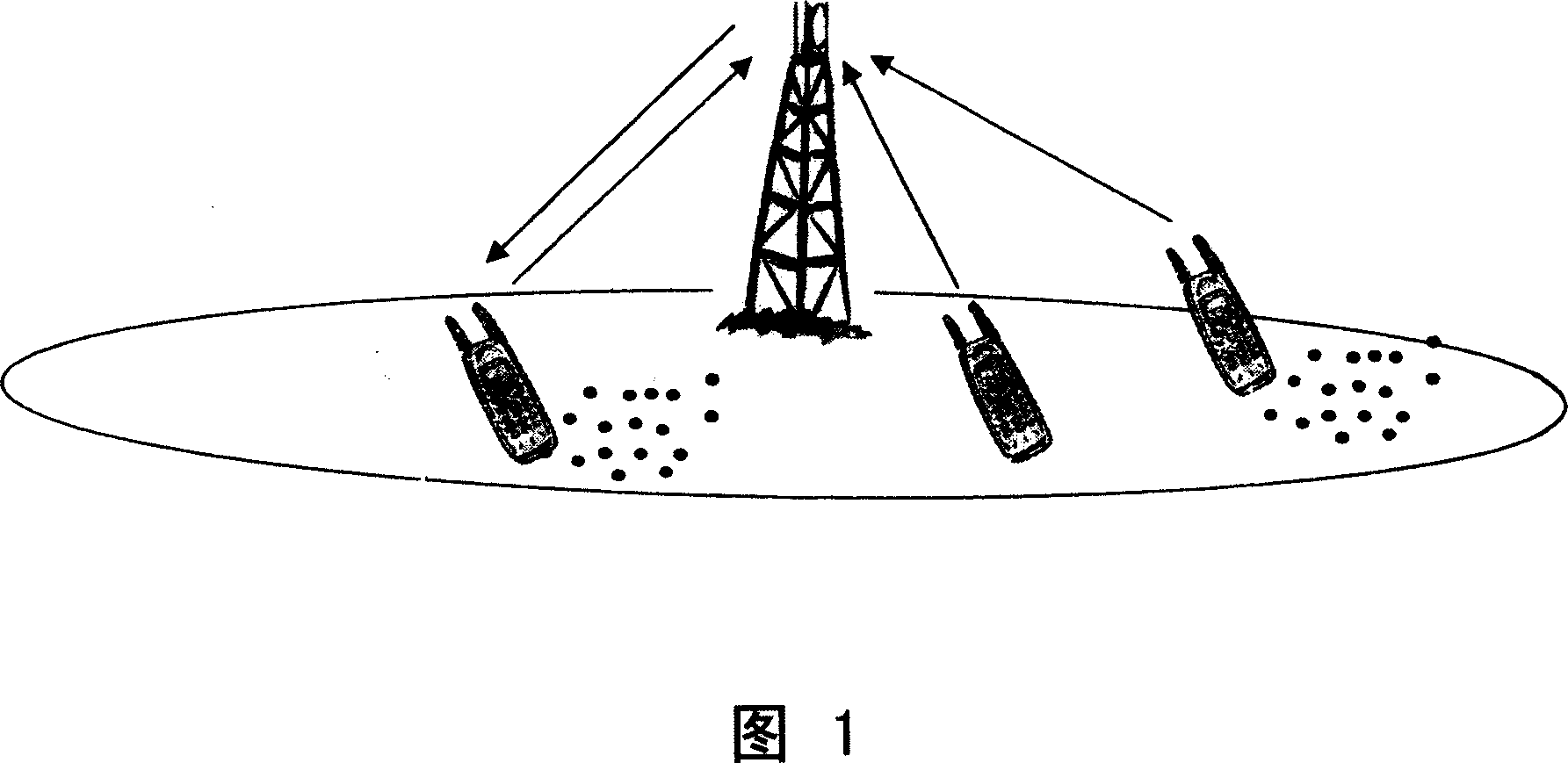Amalgamation method and equipment for honeycomb network and ubiquitous network
A technology of cellular network and network terminal, which is applied in the field of network integration and can solve problems such as insufficiency
- Summary
- Abstract
- Description
- Claims
- Application Information
AI Technical Summary
Problems solved by technology
Method used
Image
Examples
Embodiment 1a
[0080] [TDD / TD] The cellular network adopts the time division duplex (TDD) mode, the ubiquitous network and the cellular network adopt the TD (Time Divided Multiplex) mode combination and the ubiquitous network and the cellular network adopt different access methods, here the cellular network can be The access method adopts WCDMA, while the ubiquitous network access method adopts UWB or Bluetooth. The difference between the ubiquitous network terminal and the mobile terminal can be reflected in the transmitter and receiver. The transmitter and receiver involved in this application are both It has the function of sending data or receiving data and corresponding data processing in the prior art. If the communication mode is WCDMA, then the base station and the terminal in the present invention have all the functions of the base station and the terminal in the WCDMA system in the prior art respectively. Functions, including signal processing related to transmission, modulation to ...
Embodiment 1b
[0098] [TDD / TD] The cellular network adopts the time division duplex (TDD) mode, the ubiquitous network and the cellular network adopt the combination of TD and time division multiplexing modes, and the ubiquitous network and the cellular network adopt the same access mode, for example, both can adopt time division multiplexing multiplexing mode.
[0099] The basic concept diagram is shown in Figure 2. The uplink and downlink adopt time-division duplex mode, and the communication between the base station and the terminal adopts time-division multiplex mode.
[0100] The process is shown in Figure 5, and the specific process is as follows (the structure diagram of the base station, mobile terminal and ubiquitous network terminal is shown in Figure 4):
[0101] 1) The mobile terminal judges whether there is a packet to be sent;
[0102] 2) If yes, enter step 3); if not, receive the time slot allocation result sent by the base station, and enter step 7); wherein all mobile termi...
Embodiment 2a
[0111] [TDD / FD] The cellular network adopts the time division duplex (TDD) mode, and the ubiquitous network and the cellular network adopt the frequency division multiplex (Frequency Divided Multiplex) mode combination. The ubiquitous network and the cellular network adopt different access methods.
[0112] The basic concept diagram is shown in Figure 6. The uplink and downlink adopt time-division duplex mode, and the communication between the base station and the terminal adopts frequency-division multiplex mode.
[0113] The process is shown in Figure 7. The specific process is as follows (the structural diagram of the base station, mobile terminal and ubiquitous network terminal is shown in Figure 8):
[0114] 1) The mobile terminal judges whether there is a packet to be sent;
[0115] 2) If yes, enter step 3); if not, receive the frequency band allocation result sent by the base station, and enter step 7); wherein all terminals can receive the frequency band allocation r...
PUM
 Login to View More
Login to View More Abstract
Description
Claims
Application Information
 Login to View More
Login to View More - R&D
- Intellectual Property
- Life Sciences
- Materials
- Tech Scout
- Unparalleled Data Quality
- Higher Quality Content
- 60% Fewer Hallucinations
Browse by: Latest US Patents, China's latest patents, Technical Efficacy Thesaurus, Application Domain, Technology Topic, Popular Technical Reports.
© 2025 PatSnap. All rights reserved.Legal|Privacy policy|Modern Slavery Act Transparency Statement|Sitemap|About US| Contact US: help@patsnap.com



